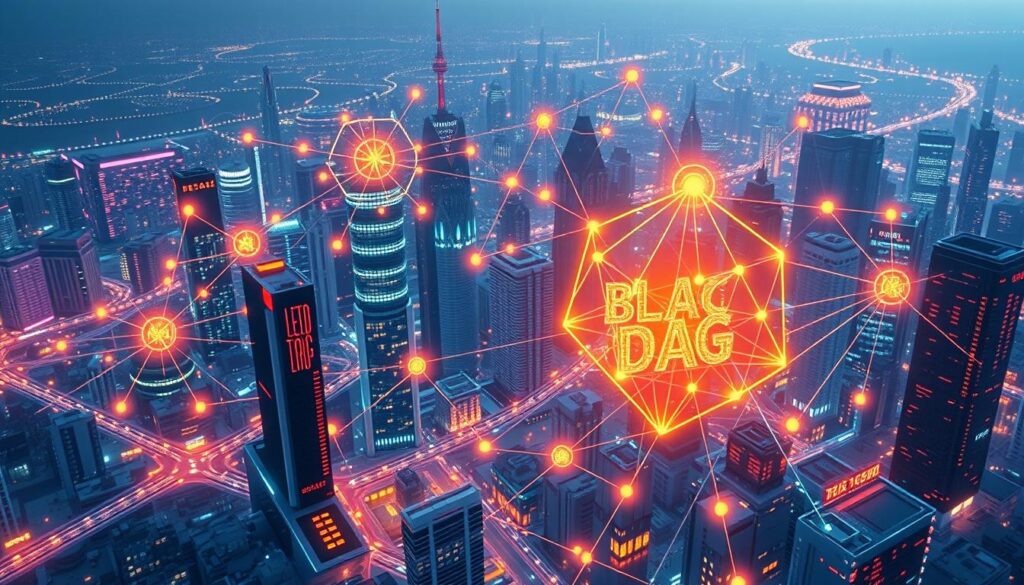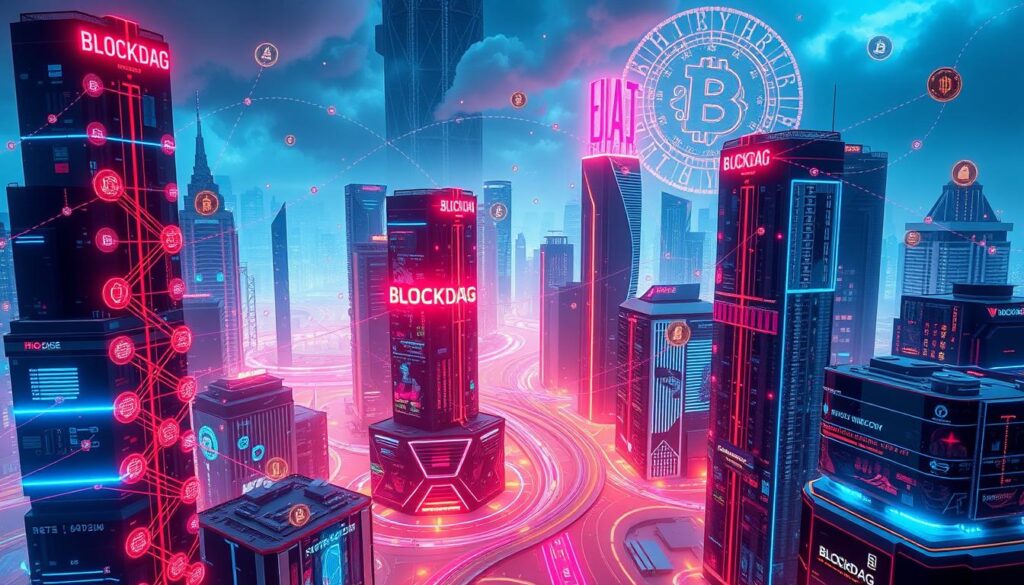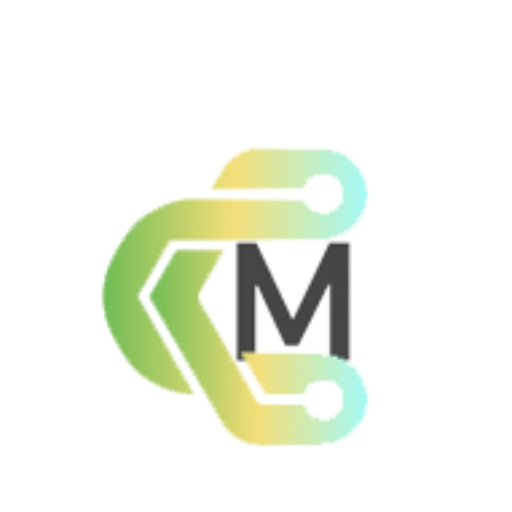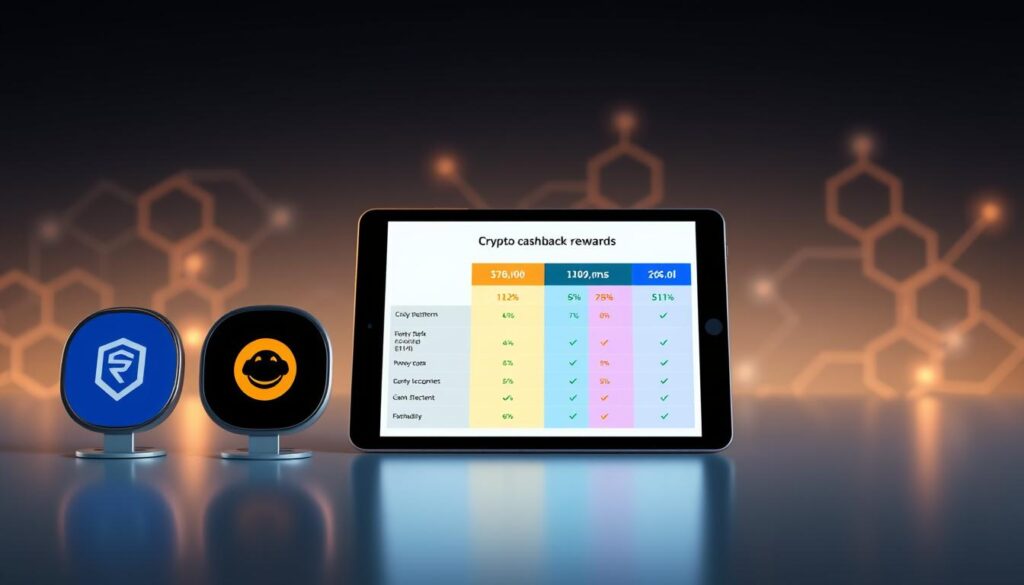Now Reading: BlockDAG Cryptocurrencies: The Future of Digital Money
- 01
BlockDAG Cryptocurrencies: The Future of Digital Money
BlockDAG Cryptocurrencies: The Future of Digital Money

In the rapidly evolving world of digital finance, a new breed of cryptocurrencies has emerged, promising to redefine the way we think about digital money. BlockDAG (Directed Acyclic Graph) cryptocurrencies, with their innovative consensus mechanisms and decentralized architecture, are poised to revolutionize the landscape of blockchain technology. These cutting-edge digital assets offer a glimpse into the future of secure, scalable, and energy-efficient digital transactions.
Rooted in the principles of peer-to-peer networks and distributed consensus, BlockDAG cryptocurrencies are designed to address the limitations of traditional blockchain-based systems. By leveraging the power of cryptographic hashing and advanced consensus algorithms, these digital currencies unlock new possibilities for faster transaction processing, increased scalability, and greater energy efficiency.
As the world continues to embrace the potential of decentralized finance, the rise of BlockDAG cryptocurrencies offers a compelling alternative to the traditional blockchain model. These innovative digital assets hold the promise of transforming the way we store, transfer, and represent value in the digital landscape, paving the way for a more secure, transparent, and accessible financial future.
Key Takeaways
- BlockDAG cryptocurrencies leverage a decentralized ledger and distributed consensus mechanism to revolutionize digital finance.
- These cryptocurrencies offer improved scalability, faster transaction processing, and enhanced energy efficiency compared to traditional blockchain-based systems.
- BlockDAG technology is poised to enable new applications in the realm of decentralized finance, smart contracts, and digital asset representation.
- Overcoming regulatory hurdles and driving mass adoption will be crucial for the widespread adoption of BlockDAG cryptocurrencies.
- The future of digital money lies in the innovative potential of BlockDAG, shaping a more secure, transparent, and accessible financial landscape.
Introduction to BlockDAG Cryptocurrencies
In the ever-evolving world of digital currencies, a new technology is gaining traction – the BlockDAG. Unlike the traditional blockchain structure, BlockDAG cryptocurrencies offer a unique approach to decentralized ledger systems and distributed consensus mechanisms.
What is a BlockDAG?
A BlockDAG, or Directed Acyclic Graph, is a data structure that departs from the linear chain of blocks found in traditional blockchain networks. Instead, it allows for the creation of a directed graph, where multiple blocks can be added concurrently, forming a network of interconnected nodes. This decentralized ledger approach aims to enhance the scalability and efficiency of blockdag cryptocurrencies compared to their blockchain counterparts.
How BlockDAG Differs from Blockchain
- In a blockchain network, transactions are recorded in a linear sequence of blocks, with each block referencing the previous one.
- In a BlockDAG system, transactions are not limited to a single linear chain but can be organized in a directed acyclic graph, allowing for parallel processing and improved distributed consensus.
- The BlockDAG structure enables higher transaction throughput and faster confirmation times, addressing the scalability challenges often faced by blockchain networks.
By embracing this innovative blockdag architecture, blockdag cryptocurrencies aim to revolutionize the way we think about and utilize decentralized digital currencies.
The Decentralized Nature of BlockDAG
At the heart of BlockDAG cryptocurrencies lies their decentralized architecture, which sets them apart from traditional centralized financial systems. This decentralized nature is achieved through a peer-to-peer network and a distributed consensus mechanism, empowering users to transact securely without the need for a central authority.
Peer-to-Peer Network
Unlike traditional banking systems, BlockDAG cryptocurrencies operate on a peer-to-peer network. This means that transactions are directly exchanged between users, without the involvement of a central intermediary. Each node in the network acts as both a client and a server, verifying and relaying transactions to the entire network. This decentralized approach ensures transparency, as all network participants have access to the same information, and no single entity can control the flow of data.
Distributed Consensus Mechanism
BlockDAG cryptocurrencies utilize a distributed consensus mechanism to validate transactions and maintain the integrity of the network. This process is achieved through a collaborative effort among the network participants, who work together to reach a shared agreement on the state of the ledger. By eliminating the need for a central authority, the distributed consensus mechanism enhances the system’s decentralization, security, and resilience against potential points of failure.
The decentralized nature of BlockDAG cryptocurrencies is a fundamental aspect of their design, empowering users and fostering a more equitable and transparent financial ecosystem. This innovative approach to digital currency challenges the traditional centralized model, paving the way for a future where financial transactions are truly peer-to-peer and under the control of the users themselves.
BlockDAG Cryptocurrencies and Cryptographic Hashing
At the heart of BlockDAG cryptocurrencies lies the innovative use of cryptographic hashing, a fundamental technology that ensures the integrity and security of the distributed ledger. Unlike traditional blockchain networks, BlockDAG employs a unique approach to data validation and synchronization, leveraging the power of cryptographic hashing to maintain the network’s stability and resilience.
The cryptographic hashing process in BlockDAG cryptocurrencies plays a crucial role in preserving the data security of the network. Each block in the BlockDAG structure is secured through a hashing algorithm, which creates a unique digital fingerprint or “hash” for the block’s contents. These hashes are then used to verify the authenticity and integrity of the data, ensuring that any attempts to tamper with the ledger can be quickly detected and rejected by the network.
| Feature | BlockDAG Cryptocurrencies | Traditional Blockchain |
|---|---|---|
| Cryptographic Hashing | Utilizes advanced hashing algorithms to secure each block and ensure data integrity | Employs hashing to secure the blockchain, but with a more linear and sequential approach |
| Blockchain Technology | Leverages a directed acyclic graph (DAG) structure to enable concurrent block addition, enhancing scalability | Utilizes a linear, sequential chain of blocks to record transactions |
| Data Security | Robust cryptographic hashing mechanisms safeguard the integrity of the distributed ledger | Relies on hashing to secure the blockchain, but with potential vulnerabilities due to the linear structure |
By incorporating advanced cryptographic hashing techniques, BlockDAG cryptocurrencies demonstrate a strong commitment to maintaining the security and trustworthiness of the blockchain technology that underpins their operations. This innovative approach sets BlockDAG apart, positioning it as a promising solution for the future of digital assets and decentralized finance.
Proof-of-Work vs. Proof-of-Stake
In the world of blockchain and cryptocurrencies, the debate between Proof-of-Work (PoW) and Proof-of-Stake (PoS) consensus mechanisms is a hot topic. As BlockDAG cryptocurrencies continue to evolve, understanding the nuances of these two approaches is crucial.
Understanding Proof-of-Work
Proof-of-Work is the traditional consensus mechanism used by many blockchain networks, including Bitcoin and Ethereum. In this system, miners compete to solve complex mathematical problems, known as cryptographic hashing, in order to validate transactions and add new blocks to the blockchain. This process requires significant computational power and energy consumption, making it a energy-intensive approach.
The Rise of Proof-of-Stake
As the demand for more energy-efficient and scalable consensus mechanisms grew, the Proof-of-Stake (PoS) model emerged as an alternative. In PoS, validators are selected based on the amount of cryptocurrency they hold, rather than their computational power. This approach reduces the energy consumption and hardware requirements associated with PoW, potentially making BlockDAG cryptocurrencies more sustainable and accessible.
| Proof-of-Work (PoW) | Proof-of-Stake (PoS) |
|---|---|
| Relies on computational power | Relies on the amount of cryptocurrency held |
| Energy-intensive | More energy-efficient |
| Miners compete to solve complex problems | Validators are selected based on their stake |
| Rewards miners for their computational work | Rewards validators for their stake in the network |
As BlockDAG cryptocurrencies continue to evolve, the choice between PoW and PoS will have a significant impact on their overall efficiency, scalability, and environmental footprint. Understanding these consensus mechanisms is crucial for evaluating the future potential of this innovative technology.
Advantages of BlockDAG Over Traditional Blockchain
As the world increasingly embraces digital currencies, the search for efficient and scalable blockchain technologies has become a top priority. BlockDAG cryptocurrencies offer several advantages over traditional blockchain networks, making them a promising solution for the future of digital money.
Scalability and Transaction Speed
One of the key advantages of BlockDAG cryptocurrencies is their superior scalability and faster transaction processing capabilities. Unlike traditional blockchains, which can become congested and slow down as the network grows, BlockDAG architectures are designed to handle a large volume of transactions without sacrificing speed. This is achieved through their parallel processing capabilities, where multiple transactions can be validated and recorded simultaneously, leading to increased scalability and transaction speed.
Energy Efficiency
Another significant advantage of BlockDAG cryptocurrencies is their improved energy efficiency compared to traditional blockchain technologies. The consensus mechanisms used in BlockDAG networks, such as Directed Acyclic Graph (DAG), require less computational power and energy-intensive mining activities, reducing the overall carbon footprint of the network. This makes BlockDAG cryptocurrencies a more environmentally friendly option, aligning with the growing global emphasis on blockchain technology sustainability.
| Feature | Traditional Blockchain | BlockDAG Cryptocurrencies |
|---|---|---|
| Scalability | Limited | Highly Scalable |
| Transaction Speed | Slower | Faster |
| Energy Efficiency | Energy-Intensive | More Energy-Efficient |
“BlockDAG cryptocurrencies represent a significant advancement in blockchain technology, offering unparalleled scalability, faster transaction speeds, and improved energy efficiency – the key drivers for the future of digital money.”
BlockDAG Cryptocurrencies and Smart Contracts
The emergence of BlockDAG cryptocurrencies presents an exciting opportunity for the development and execution of smart contracts. Smart contracts are self-executing digital agreements that facilitate, verify, and enforce the performance of contractual terms without the need for intermediaries. By leveraging the decentralized and secure nature of blockchain technology, BlockDAG cryptocurrencies can enable the creation of decentralized applications (dApps) that harness the power of smart contracts.
Smart contracts built on BlockDAG networks can automate a wide range of financial transactions, from simple payments to complex multi-party agreements. This technology has the potential to streamline processes, reduce administrative costs, and increase transparency and trust in various industries, from finance and real estate to supply chain management and beyond.
- Smart contracts can facilitate seamless peer-to-peer transactions, eliminating the need for centralized authorities or intermediaries.
- The decentralized nature of BlockDAG networks ensures that smart contracts are executed in a transparent and tamper-proof manner, fostering trust and accountability.
- The scalability and high transaction speeds of BlockDAG cryptocurrencies can enable the development of sophisticated smart contracts that can handle complex financial operations, further expanding the realm of decentralized applications.
As the adoption of BlockDAG cryptocurrencies continues to grow, the potential for smart contracts to transform various industries and enable new business models becomes increasingly significant. This innovative technology holds the promise of a more efficient, transparent, and decentralized future.

“The combination of BlockDAG cryptocurrencies and smart contracts has the potential to revolutionize the way we conduct business and interact with digital assets.”
The Future of Digital Assets
As the world becomes increasingly digital, the role of BlockDAG cryptocurrencies in shaping the future of digital assets is gaining significant attention. Two key areas where BlockDAG is making a profound impact are tokenization and asset representation, as well as the growth of decentralized finance (DeFi) applications.
Tokenization and Asset Representation
The tokenization of real-world assets, such as real estate, artwork, or even commodities, is a transformative application of BlockDAG technology. By tokenizing these assets, they can be easily represented, traded, and secured on a decentralized blockchain network. This provides improved liquidity, accessibility, and transparency, empowering individuals and businesses to participate in the digital asset economy.
Decentralized Finance (DeFi)
The rise of DeFi, an ecosystem of decentralized financial applications built on BlockDAG networks, is another exciting development. DeFi applications enable a wide range of financial services, from lending and borrowing to trading and derivatives, all without the need for traditional financial intermediaries. This decentralized approach has the potential to democratize access to financial services and reduce barriers to entry, fostering financial inclusion and innovation.
As the adoption of BlockDAG cryptocurrencies continues to grow, the integration of these technologies with digital assets and DeFi applications is expected to accelerate. This convergence will likely transform the way we perceive, manage, and interact with our financial and economic systems, ushering in a new era of digital asset management and decentralized finance.
| Tokenization | Decentralized Finance (DeFi) |
|---|---|
| Represents real-world assets on the blockchain | Decentralized financial applications and services |
| Improves liquidity, accessibility, and transparency | Enables lending, borrowing, trading, and more |
| Empowers individuals and businesses to participate in the digital asset economy | Reduces barriers to entry and fosters financial inclusion |
“The integration of BlockDAG cryptocurrencies with digital assets and DeFi applications is expected to transform the way we perceive, manage, and interact with our financial and economic systems.”
BlockDAG Cryptocurrencies: Challenges and Limitations
As BlockDAG cryptocurrencies continue to gain traction, they face several challenges and limitations that must be addressed for widespread adoption. One of the primary [challenges] is the regulatory landscape, as [blockchain technology] remains a relatively new and complex field, requiring clear guidelines and policies from governing bodies around the world.
Another limitation of BlockDAG networks is their [interoperability] with existing blockchain systems. Achieving seamless integration and data exchange between different [blockchain] protocols is crucial for facilitating the widespread use of [digital assets] and [decentralized finance (DeFi)] applications. Overcoming these [technological] hurdles will be essential for BlockDAG to establish itself as a viable alternative to traditional [cryptocurrency] platforms.
| Challenge | Description |
|---|---|
| [Regulatory Hurdles] | The lack of clear [regulatory] guidelines and policies surrounding [blockchain technology] and [digital assets] can create uncertainty and slow [adoption]. |
| [Interoperability Issues] | Ensuring seamless integration and data exchange between different [blockchain] protocols is crucial for facilitating the widespread use of [digital assets] and [DeFi] applications. |
| [Technological Advancements] | Continuous [technological] improvements are necessary to enhance the [scalability], [security], and [efficiency] of BlockDAG networks, ultimately driving [mainstream adoption]. |
To overcome these [challenges] and [limitations], BlockDAG cryptocurrencies must continue to evolve and adapt, leveraging the latest [technological] advancements and collaborating with policymakers to create a more favorable regulatory environment. Only then can BlockDAG realize its full potential and become a truly disruptive force in the [digital asset] landscape.

Adoption and Regulation of BlockDAG Technology
As the blockchain ecosystem continues to evolve, the regulatory landscape surrounding BlockDAG cryptocurrencies has become a crucial consideration. Policymakers and industry leaders are grappling with the complexities of integrating this innovative technology into existing financial frameworks.
Regulatory Landscape
Governments around the world have taken varied approaches to the regulation of BlockDAG cryptocurrencies. Some have embraced the technology, implementing clear guidelines to foster innovation and protect consumers, while others have maintained a more cautious stance, seeking to mitigate the perceived risks. The regulatory landscape is continuously shifting, and industry stakeholders must navigate this dynamic environment to ensure compliance and drive responsible adoption.
Mass Adoption Hurdles
Despite the promising features of BlockDAG cryptocurrencies, such as their scalability and energy efficiency, mass adoption remains a significant challenge. Public perception, technical barriers, and the lack of mainstream awareness are among the key hurdles impeding widespread acceptance. Overcoming these obstacles will require a concerted effort from the blockchain community, policymakers, and educational initiatives to promote the benefits and address the misconceptions surrounding this transformative technology.
As the industry continues to evolve, the successful adoption of BlockDAG cryptocurrencies will depend on the ability to navigate the complex regulatory landscape and address the mass adoption hurdles that stand in the way. By embracing collaborative efforts and progressive policymaking, the BlockDAG ecosystem can unlock its full potential and redefine the future of digital assets.
“The key to unlocking the full potential of BlockDAG technology lies in striking the right balance between innovation and responsible regulation.”
Real-World Applications of BlockDAG Cryptocurrencies
As blockchain technology continues to evolve, the emergence of BlockDAG cryptocurrencies has opened up a world of possibilities for real-world applications and use cases. These innovative digital finance solutions are transforming industries and paving the way for a more efficient, secure, and decentralized future.
One of the key advantages of BlockDAG cryptocurrencies is their ability to tackle the scalability challenges faced by traditional blockchain networks. By leveraging a directed acyclic graph (DAG) structure, BlockDAG-based cryptocurrencies can process transactions more rapidly and with greater throughput, making them well-suited for applications that require high-speed and high-volume data processing.
In the realm of digital finance, BlockDAG cryptocurrencies are finding numerous real-world applications. From enabling faster and more cost-effective cross-border payments to facilitating decentralized finance (DeFi) solutions, these innovative blockchain technology platforms are revolutionizing the way we think about and interact with money.
Additionally, BlockDAG cryptocurrencies are being explored in various other sectors, such as supply chain management, IoT (Internet of Things) applications, and even the gaming industry. The flexibility and scalability of this technology allow for a wide range of use cases that can improve efficiency, transparency, and security across different industries.
As the adoption of BlockDAG cryptocurrencies continues to grow, we can expect to see even more exciting real-world applications emerge, further solidifying the role of this innovative blockchain technology in shaping the future of digital finance.
“BlockDAG cryptocurrencies are the next frontier in the evolution of digital finance, offering scalable, secure, and decentralized solutions that are transforming industries and unlocking new possibilities.”
Conclusion
As we’ve explored throughout this article, BlockDAG cryptocurrencies represent a transformative shift in the world of digital finance. These innovative blockchain-based technologies offer a compelling alternative to traditional cryptocurrencies, promising enhanced scalability, faster transaction speeds, and greater energy efficiency.
The decentralized nature of BlockDAG networks, underpinned by their peer-to-peer structure and distributed consensus mechanisms, aligns with the core principles of blockchain technology – empowering users, promoting transparency, and fostering a more equitable financial ecosystem. By leveraging the power of cryptographic hashing and exploring advancements like Proof-of-Stake, BlockDAG cryptocurrencies are poised to revolutionize the way we think about digital money and the future of finance.
As the adoption and regulation of BlockDAG technology continue to evolve, we can expect to see a range of real-world applications emerge, from tokenization and asset representation to the growth of decentralized finance (DeFi). While challenges and limitations remain, the potential of BlockDAG cryptocurrencies to reshape the digital finance landscape is undeniable. As we move forward, it will be exciting to witness the continued innovation and transformation that these groundbreaking technologies will bring to the forefront of the digital economy.
FAQ
What is a BlockDAG?
A BlockDAG (Blockchain-Directed Acyclic Graph) is a type of decentralized ledger technology that differs from traditional blockchain networks. Unlike blockchain, which stores transactions in linear blocks, BlockDAG uses a directed acyclic graph (DAG) structure to record and validate transactions in a more efficient and scalable manner.
How does BlockDAG differ from blockchain?
The key difference between BlockDAG and blockchain is the data structure used to record transactions. While blockchain stores transactions in linear blocks, BlockDAG utilizes a directed acyclic graph (DAG) structure, where each new transaction is directly connected to and validated by multiple previous transactions, creating a more interconnected and scalable network.
What are the benefits of the decentralized nature of BlockDAG?
The decentralized nature of BlockDAG cryptocurrencies is a significant advantage, as it eliminates the need for a central authority to manage the network. The peer-to-peer network and distributed consensus mechanism ensure that transactions are validated and recorded in a secure, transparent, and tamper-resistant manner without a single point of failure.
How does cryptographic hashing contribute to the security of BlockDAG?
BlockDAG cryptocurrencies, like their blockchain counterparts, utilize cryptographic hashing to ensure the integrity and security of the distributed ledger. By applying complex mathematical algorithms to the transaction data, BlockDAG networks create a secure and immutable record of all transactions, making it virtually impossible for malicious actors to tamper with the ledger.
What are the differences between Proof-of-Work (PoW) and Proof-of-Stake (PoS) in BlockDAG?
Proof-of-Work (PoW) and Proof-of-Stake (PoS) are two popular consensus mechanisms used in blockchain and BlockDAG networks. PoW, as seen in Bitcoin, requires miners to solve complex mathematical problems to validate transactions, while PoS, as used in Ethereum 2.0, relies on validators who stake their tokens to participate in the consensus process. BlockDAG networks may utilize either PoW, PoS, or a combination of both, each with its own set of advantages and trade-offs in terms of energy efficiency, security, and scalability.
What are the advantages of BlockDAG over traditional blockchain?
BlockDAG cryptocurrencies offer several advantages over traditional blockchain networks, including improved scalability and transaction speed, as well as enhanced energy efficiency. The DAG structure allows for parallel processing of transactions, leading to faster confirmation times and the ability to handle a higher volume of transactions without significantly increasing energy consumption.
How can BlockDAG enable smart contracts and decentralized applications?
Similar to blockchain technology, BlockDAG cryptocurrencies can be leveraged to enable the development and execution of smart contracts. These self-executing, programmable agreements can pave the way for the creation of decentralized applications (dApps) that leverage the security, transparency, and flexibility of the BlockDAG network.
What is the potential of BlockDAG in shaping the future of digital assets?
BlockDAG cryptocurrencies have the potential to revolutionize the world of digital assets by enabling the tokenization of real-world assets and the growth of decentralized finance (DeFi) applications. The ability to represent and trade a wide range of assets on a secure, transparent, and scalable BlockDAG network could unlock new opportunities for investment, lending, and other financial services.
What are the challenges and limitations of BlockDAG cryptocurrencies?
While BlockDAG cryptocurrencies offer significant advantages, they also face some challenges and limitations, such as regulatory hurdles, interoperability issues with other blockchain networks, and the need for further technological advancements to achieve mainstream adoption. Overcoming these obstacles will be crucial for the long-term success and widespread acceptance of this emerging technology.
How is the regulatory landscape shaping the adoption of BlockDAG technology?
The regulatory landscape surrounding BlockDAG cryptocurrencies is still evolving, with varying approaches and policies across different jurisdictions. Clear and supportive regulatory frameworks will be essential for driving the mass adoption of this technology, as they can provide the necessary legal certainty and consumer protection measures to encourage widespread acceptance and utilization.
What are some real-world applications of BlockDAG cryptocurrencies?
BlockDAG cryptocurrencies are being explored and implemented in various industries and sectors, including digital finance, supply chain management, identity verification, and more. The scalability, speed, and security of BlockDAG networks make them well-suited for a wide range of use cases that leverage the benefits of decentralized ledger technology.














